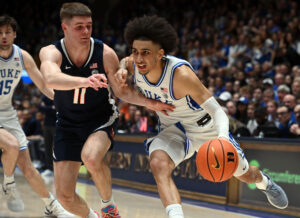By Darren Myers
If ever there was a phrase that made fantasy football players cringe, it would be: Running Back by Committee (RBBC).
Gone are the days of the bell cow running back.
Gone are the days when running backs were considered a sacred art of fantasy football.
Gone are the days where teams relied solely upon one man to carry the work load.
NFL teams have entered dangerous territory with fantasy football owners. All over the league there are backfields filled with two, and sometimes three different running backs. Most of whom are capable of handling the workload on their own, but instead, they share carries. In the process, their fantasy value decreases as the games go on.
It has become a weekly frustration trying to decipher which member of the backfield committee would succeed and which would struggle, and that struggle doesn’t seem to be ending anytime soon.
Many valuable running backs will be sharing a backfield in 2016, so this article will help decipher which running back has more potential and which running back should be drafted higher when it comes time for fantasy football drafts.
Running Back By Committee: How To Navigate It in Fantasy
Atlanta Falcons: Devonta Freeman vs Tevin Coleman
Freeman finished as the number one overall running back in fantasy in 2015. That’s no small feat. He finished with 338 touches, tallying 1,634 yards and 14 touchdowns. He had 11 games with more than ten fantasy points and four games with 25+ fantasy points. Now that may not be attainable again in 2016, but even with a slight drop-off, Freeman still has the potential to be a top ten fantasy running back. The downfall? Well, going into camp last year, the hype was around rookie Tevin Coleman. Coleman was drafted by head coach Dan Quinn and the current Falcons staff, while Freeman is the product of a previous staff.
Edge: Devonta Freeman.
Whether Quinn drafted him or not, you can’t discount production and that’s all Freeman was last year was productive.
Cincinnati Bengals: Jeremy Hill vs Giovani Bernard
This backfield will continue to be the most back-and-forth of them all. Both running backs are immensely talented, there’s no arguing that. Hill finished 18th in rushing yards with 794 yards while Bernard had 730 yards, good enough for 23st in the NFL. The differences came in the touchdown category. Hill had 11 and Bernard had two.
With that being said, these are two completely different backs. Hill is your typical back. He will run between the tackles and get the tough-earned yardage, while Bernard is the pass-catching third down back. Both were just as inconsistent as the other. Hill had seven games with ten or more fantasy points. In the other nine games, his point totals were as follows: -1, 2, 2, 6, 5, 1, 9, 1, 6. Hill’s touchdowns mirrored his inconsistent play. He had one game with three touchdowns, and three games with two touchdowns.
Edge: Jeremy Hill.
He’s the more dependent back. When given the opportunity, he has the most potential to carry a team. And it showed in 2014.
Jacksonville Jaguars: T.J Yeldon vs Chris Ivory
The Chris Ivory signing hurts fantasy players more than any other thus far. Yeldon and Ivory were both capable backs in their own right in 2015. This coming season, they’ll be sharing a backfield together. While this acquisition makes perfect sense for the Jaguars and their need for red zone help, it brings tears to the eyes of fantasy players.
Yeldon was by no means flashy or game-changing in his rookie year, but that is also due in large part to play-calling. The Jaguars found themselves passing on 63% of their plays. Their red zone touchdown percentage was middle-of-the-pack at 53%, also due in large part to play calling. How many times did the Jaguars have the ball on the opponent’s five-yard line and either pass it or rush with Toby Gerhart instead of handing it off to their number one running back, Yeldon? Too many.
The acquisition of Ivory, a Pro Bowler in 2015, will boost a medial red zone offense. Of Ivory’s eight touchdowns last year (a career high), seven of them came from within 10 yards. The other was a 32-yard run. Ivory is best between the tackles and in short distance, but he’s able to break a few long runs every now and again, something Yeldon lacked.
Edge: Between the 20’s – Yeldon. In the redzone – Ivory.
Yeldon is the more all-around back. He’s capable of catching the ball out of the backfield, which is what Jacksonville does a lot of. Ivory, on the other hand, can pound a defense down and wear them out. Similar to Hill/Bernard in Cincinnati, I think this backfield produces a 50/50 split.
RBBC’s to be on the lookout for:
1. Anywhere Arian Foster lands…
2. The San Diego Chargers – How will Melvin Gordon explain his disastrous rookie season compared to Danny Woodhead’s RB10 performance?
3. Will the Detroit Lions make any moves? Maybe Alfred Morris?
4. Will the New Orleans Saints re-sign Tim Hightower to create a timeshare with Mark Ingram?
5. Does Denver re-sign Ronnie Hillman?





